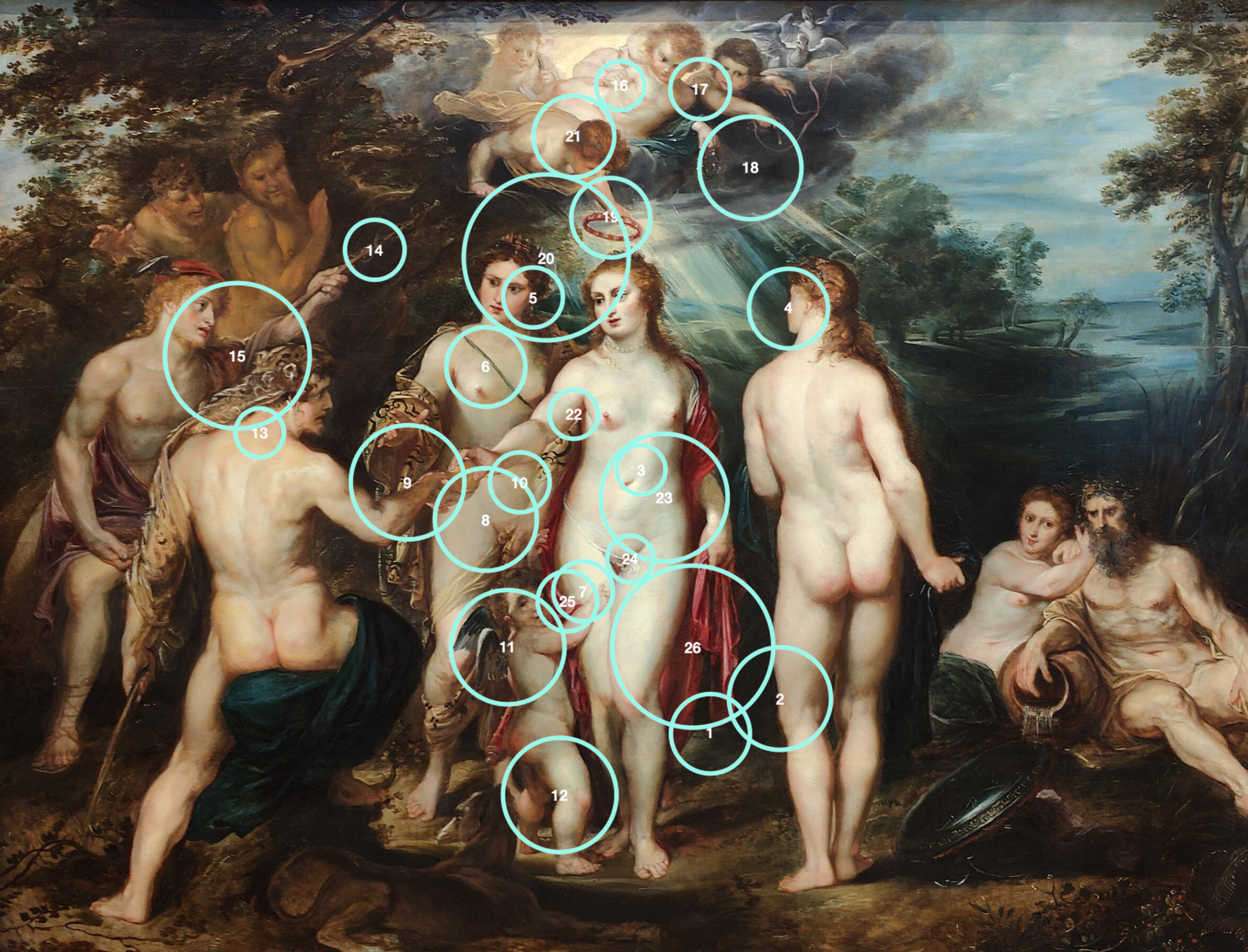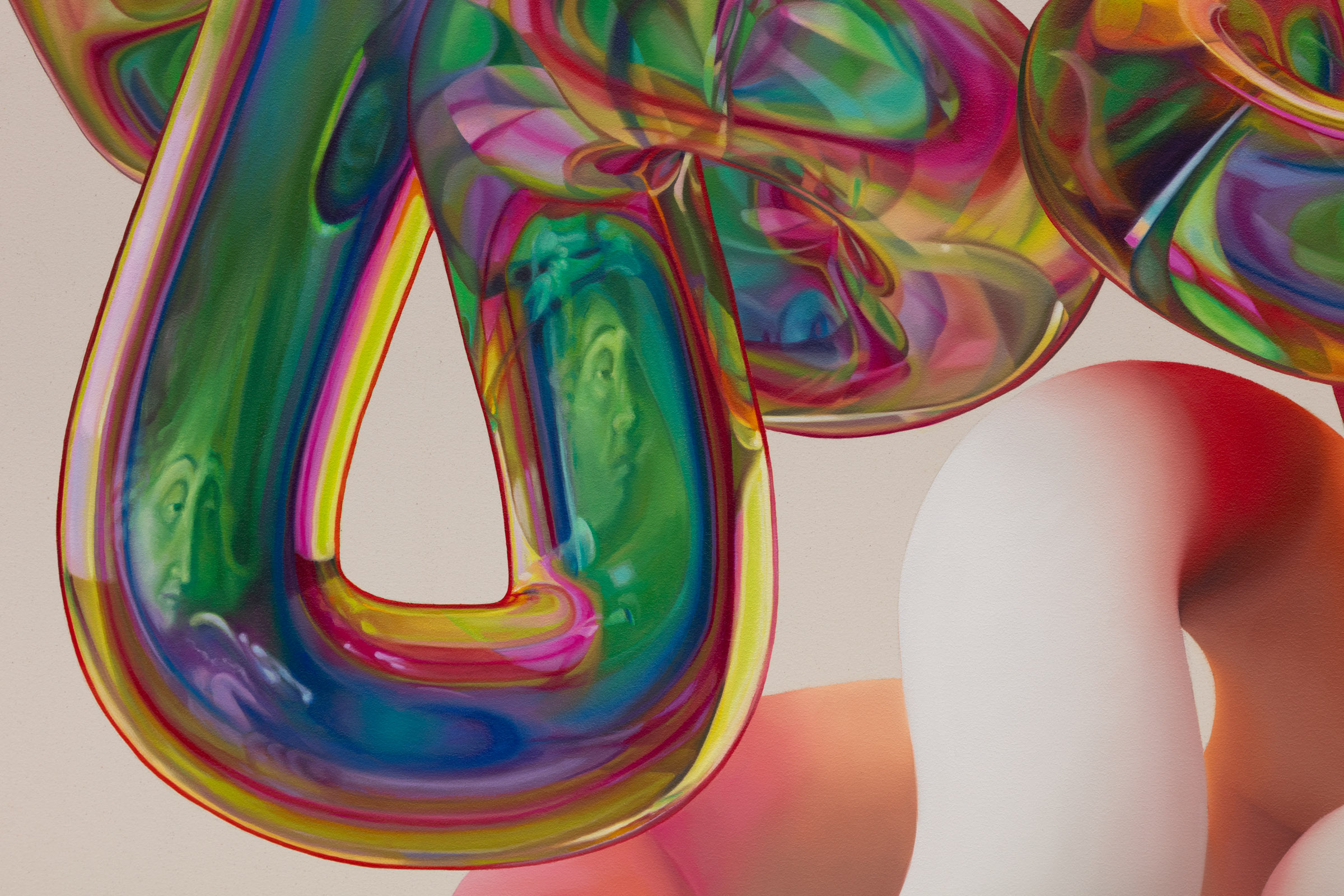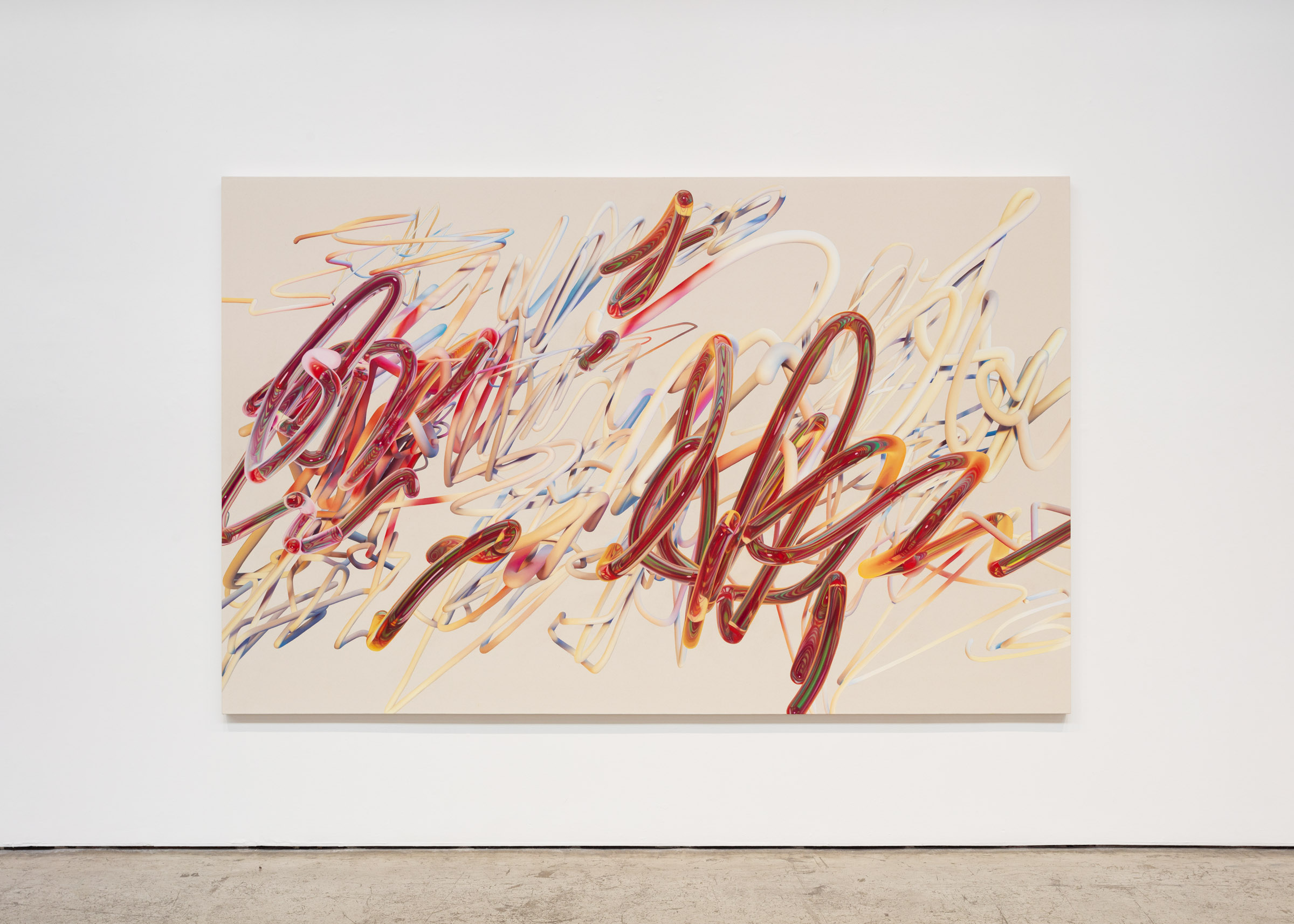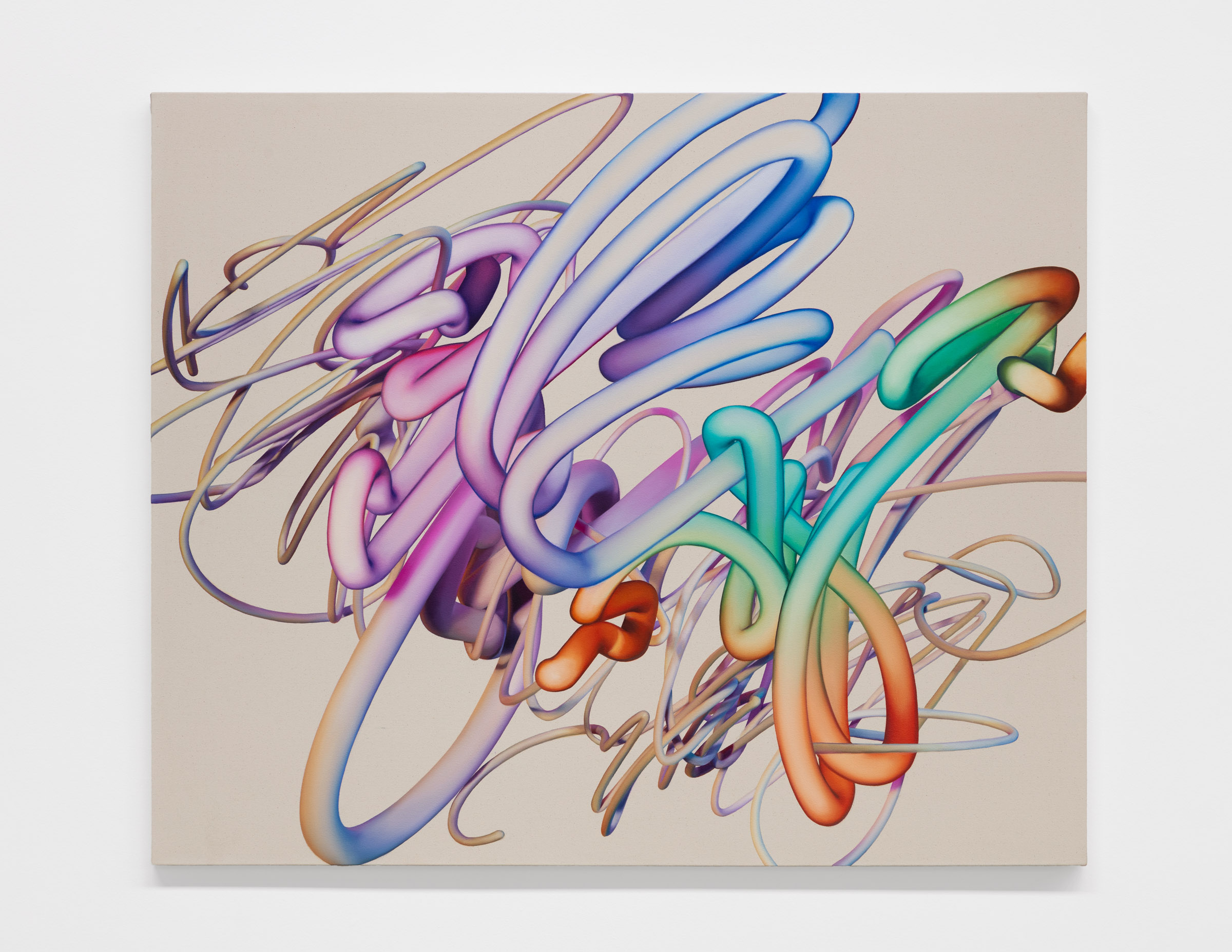Gaze Paintings
2022-present
What does it mean to 𝙡𝙤𝙤𝙠 at painting? In contrast to my regular working process which begins with randomized bezier points, these paintings instead use data from eye-tracking software to directly visually map bezier curves.
Eye tracking records subjective vision. In this case, my vision as I look upon canonical works by painters like Rubens, Tintoretto, Bronzino, and others. Throughout history, painterly tropes such as the female nude have been intensely tied to the male gaze. These works aim to subvert such traditions by mapping my own gaze and translating it into an abstract representation of viewership.
By deepening visual pathways and penetrating beyond the flat surface of the picture plane, this process reveals some hidden internal logic unique to each work I gaze upon.


Data collected in person using Pupil Labs Neon Module at The National Gallery while on residence in London, UK.


Through this process, raw gaze data serves as an entry point, a way to begin the painting. The goal is not a direct 1:1 illustration of my sight lines, rather an interpretative and abstracted gesture based on fixation and duration. Many forms are possible from just one gaze session. If I return to a particular session more than once, the works are titled ‘Excerpt’ accordingly.






The Gaze Painting series continues to expand as I broaden my approach. In August 2023, I conducted a research study of over 100 participants who contributed their gazes via a webcam eye-tracking platform. Viewer’s sight lines are analysed, interpreted, and composed to construct these gestural, motion-filled works packed with detail. Many thanks to Harry Vallianos for his help in developing the new plugin iteration ‘VVVi’.




